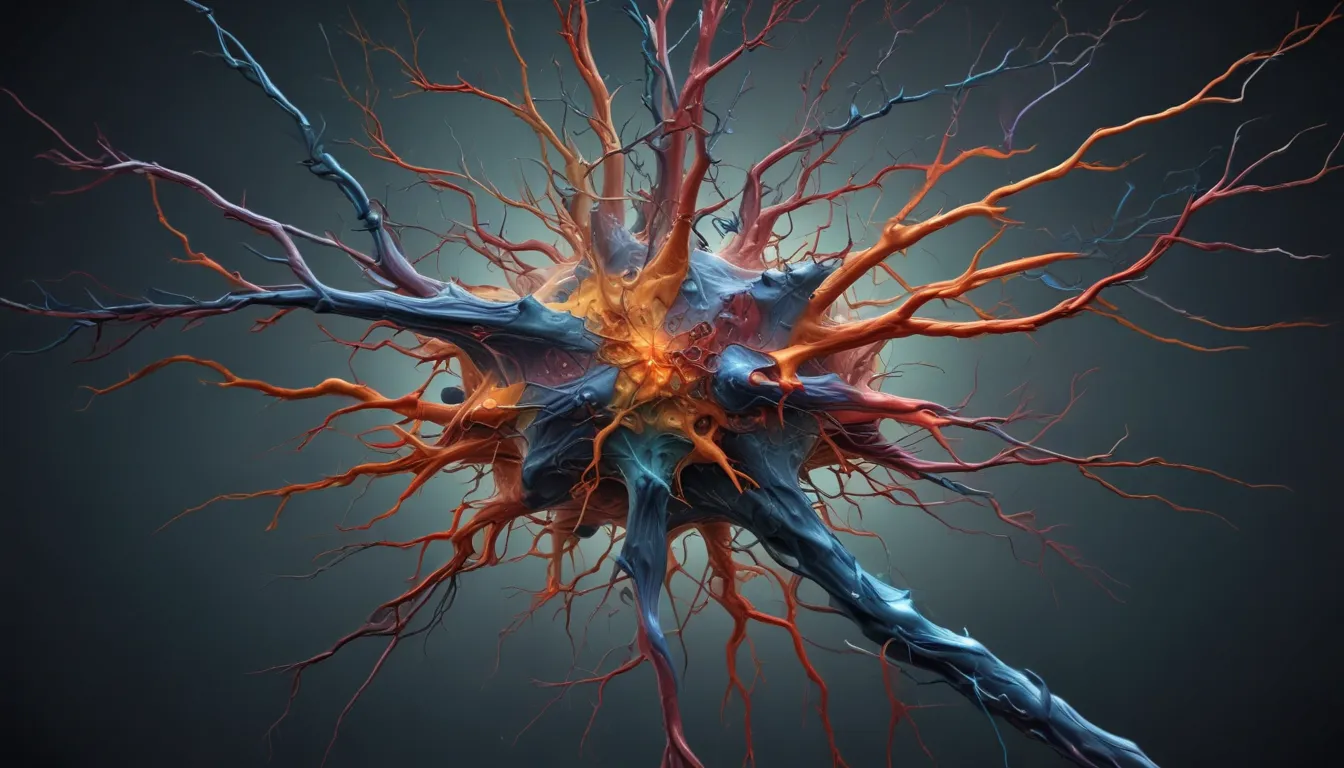A Note About Images: The images used in our articles are for illustration purposes only and may not exactly match the content. They are meant to engage readers, but the text should be relied upon for accurate information.
Synaptic transmission is a captivating and essential process in the brain and nervous system. It serves as the communication pathway between neurons, allowing for the transfer of vital information. Understanding the intricacies of synaptic transmission is key to unraveling the complexities of the brain and developing innovative treatments for neurological disorders.
The Significance of Synaptic Transmission
Synaptic transmission plays a vital role in the nervous system by facilitating the communication between neurons. This process involves the transmission of electrical and chemical signals, enabling the integration and processing of information throughout the body.
Unveiling the Synaptic Players
At the core of synaptic transmission are synapses, specialized structures that facilitate the transfer of information between neurons. Comprising a presynaptic terminal, synaptic cleft, and postsynaptic terminal, synapses orchestrate the release of neurotransmitters in response to electrical signals.
The Role of Neurotransmitters
Neurotransmitters act as the chemical messengers that transmit signals across synapses. Stored within vesicles in the presynaptic terminal, neurotransmitters are released into the synaptic cleft upon stimulation. Examples of neurotransmitters include dopamine, serotonin, acetylcholine, and glutamate.
The Dance of Excitation and Inhibition
Neurotransmitters can elicit either excitatory or inhibitory effects on the postsynaptic neuron. While excitatory neurotransmitters enhance the likelihood of a neuron firing an action potential, inhibitory neurotransmitters work in the opposite direction, lowering this probability.
The Versatility of Synaptic Modulation
The strength and effectiveness of synaptic transmission can be modulated through various mechanisms. Changes in receptor numbers, alterations in neurotransmitter release, and neuromodulator activation all contribute to the dynamic modulation of synaptic transmission.
Synaptic Plasticity Unveiled
Synaptic plasticity is a crucial aspect of learning and memory formation, allowing synapses to undergo long-lasting changes in strength. This dynamic process enables the strengthening or weakening of specific synaptic connections, shaping our ability to learn and remember.
Bridging Gaps Through Electrical Synaptic Transmission
In addition to chemical synaptic transmission, electrical synaptic transmission occurs via specialized channels known as gap junctions. These channels facilitate the direct flow of electrical signals between neurons, enabling rapid and synchronized communication.
Beyond Neurons: Synaptic Transmission and Cellular Interactions
Synaptic transmission extends beyond neuron-neuron communication, playing a pivotal role in interactions between neurons and other cell types, such as muscle cells and glandular cells.
Exploring the Impact of Disruptions in Synaptic Transmission
Imbalances in synaptic transmission can contribute to the development of neurological disorders. Deficiencies in neurotransmitter levels, particularly dopamine, are associated with conditions like Parkinson’s disease, while abnormalities in glutamate transmission are linked to disorders such as epilepsy and schizophrenia.
The Influence of Drugs on Synaptic Transmission
Many drugs exert their effects by targeting synaptic transmission. For example, antidepressants modulate neurotransmitter levels in the synaptic cleft, while anesthetics disrupt signal transmission between neurons.
The Beauty of Signal Integration
Synaptic transmission allows for the integration of signals from multiple sources. Neurons receive both excitatory and inhibitory inputs, with the final output determined by the balance of these signals.
The Dynamic Nature of Synaptic Transmission
Far from being static, synaptic transmission is a dynamic process that can be regulated in response to various stimuli. Environmental factors, neuronal activity, and internal changes in the organism can all influence synaptic transmission.
Revolutionizing the Study of Synaptic Transmission
Recent advancements in imaging and electrophysiological techniques have revolutionized our understanding of synaptic transmission. Techniques such as fluorescence microscopy and patch-clamp recordings enable real-time visualization and manipulation of synaptic processes, opening new avenues for research.
Synaptic transmission is a fascinating realm of biological processes that shapes our understanding of the brain’s inner workings. From neurotransmitter release to the modulation of synaptic plasticity, each facet of synaptic transmission contributes to our ability to learn, remember, and function in our daily lives.
The Journey Continues: Unraveling Synaptic Complexity
Embark on a deeper exploration into the brain’s remarkable adaptability through synaptic plasticity, a phenomenon that underpins our ability to adapt and learn from experiences. Dive into the pioneering work of Dr. Thomas C. Südhof, a trailblazer in neuroscience, to gain insight into the brilliance and dedication driving our comprehension of the brain’s intricacies.
Conclusion: Deciphering the Mysteries of Synaptic Transmission
In conclusion, synaptic transmission stands as a cornerstone of communication between neurons, offering invaluable insights into the brain’s functioning and information processing. From neurotransmitter release to receptor binding, each step in synaptic transmission contributes to the intricate dance of neural communication. With continued research and technological advancements, scientists are unlocking the secrets of synaptic transmission, paving the way for innovative treatments and a deeper understanding of the human brain’s complexities.
FAQs: Demystifying Synaptic Transmission
-
What is synaptic transmission?
Synaptic transmission is the process through which information is communicated between neurons via neurotransmitters across synapses. -
How does synaptic transmission occur?
Synaptic transmission unfolds as electrical signals trigger neurotransmitter release from the presynaptic terminal, leading to receptor binding on the postsynaptic neuron and the generation of electrical impulses. -
What are neurotransmitters?
Neurotransmitters are chemical messengers that transmit signals between neurons, mediating communication across synapses. -
Can synaptic transmission be disrupted?
Yes, disruptions in synaptic transmission can occur due to imbalances in neurotransmitter levels, receptor malfunctions, or damage to the synapse, resulting in neurological disorders and cognitive impairments. -
How is synaptic transmission studied?
Synaptic transmission is studied through a range of experimental techniques, including electrophysiology, imaging methods, and genetic manipulations, providing insights into the molecular mechanisms and implications of synaptic communication.
As we delve into the complexities of synaptic transmission, we uncover the remarkable processes that govern neural communication and shape our understanding of the brain’s inner workings. Join us in exploring the wonders of synaptic transmission and unraveling the mysteries of the human mind with each captivating discovery.





